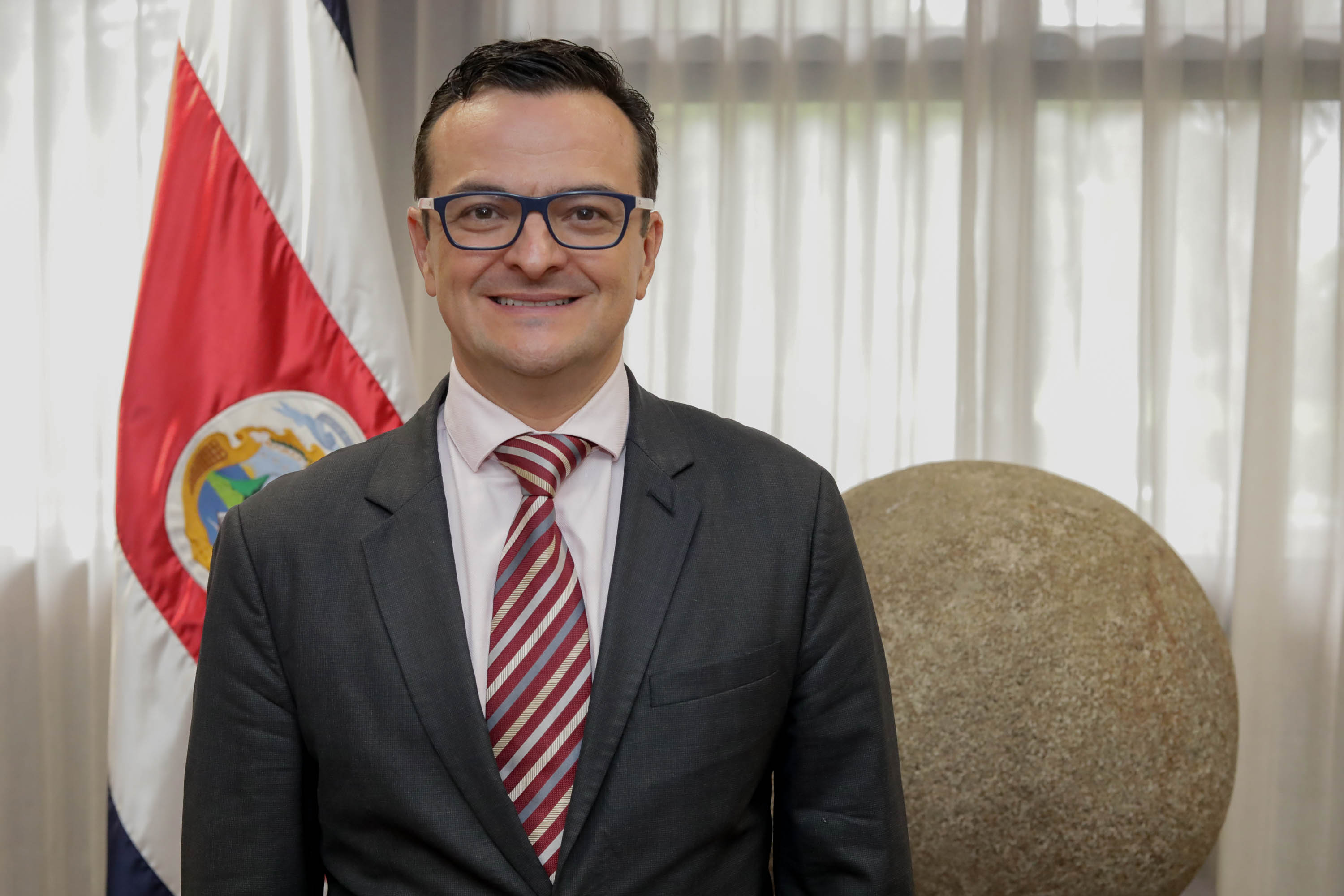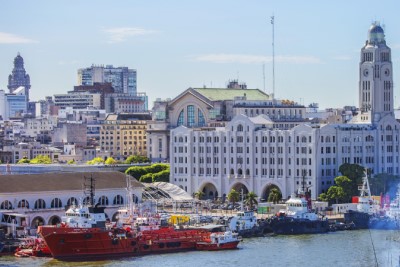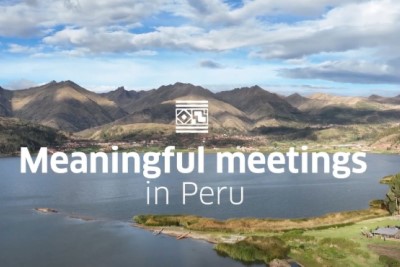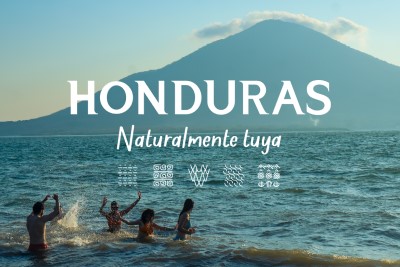FOCUS
Gustavo J. Segura Sancho, Rector Minister of Tourism of Costa Rica – Executive President of the Costa Rican Institute of Tourism
Visit Latin America: What is the current tourism situation in Costa Rica and what are the next steps for its revival ?

Gustavo Segura Sancho, Rector Minister of Tourism of Costa Rica – Executive President of the Costa Rican Institute of Tourism
The abrupt halt in tourist activity due to the pandemic has caused much suffering throughout the country. COVID-19 has severely affected Costa Rica’s economy, leaving many workers unemployed and without pay for several months. The greatest challenge has been to reactivate the tourism industry in order to promote the country’s economic recovery, always giving priority to health management. Although domestic tourism has been a great relief, especially at weekends, it accounts for only 10-15% of total tourism. This is why the gradual recovery of international tourism is crucial. In addition, international tourism has a social impact as it improves the quality of life for thousands of people in the coastal, rural and mountains regions of Costa Rica. Our tourism development model ensures that tourists travel to visit different communities, distributing tourism income among thousands of small and medium-sized enterprises, which are the cornerstone of tourism in our country.
We began reopening the air and sea borders in August and since 1st of November, entry from all countries in the world has been allowed. So far, this reopening has been a success because we are developing very strict protocols and ensuring compliance. Almost all the airlines that served our territory before the pandemic have already returned. The government of Costa Rica has taken the coronavirus very seriously and has responded quickly to the pandemic since its emergence. The proof is that we have been able to delay community transmission of COVID-19 for five months, during which time our tourism industry has been preparing for the reopening that began last August. Today, all providers are ready with health protocols that have been tested and will be reinforced if necessary; all tourism activities are operational. We haven’t had a single report of the virus spreading among tourists since we restarted the reception of non-essential travel.
We are supporting the various players in our tourism industry with short-term support for their psychological, physical and financial needs, without losing sight of the long-term task of ensuring that Costa Rica continues to be a key player in international tourism.
Our next steps include support for a bill that would create a new model for granting one-year visas to international citizens working from home from Costa Rica. In addition, we are very pleased with a bill that would promote the production of series from around the world, “reality TV” and video clips, among other audiovisual products in Costa Rica, attracting foreign investment, creating jobs and impacting on the tourism sector as part of their objectives.
Similarly, the government has promoted a bill to create a guaranteed fund, which would allow tourism enterprises to obtain loans from commercial banks.
We have not been waiting for the international arrivals figures for 2019 (3 million tourists) for some time, we expect a steady increase in the coming months. With the measures we have put in place, we could receive between 800,000 and 900,000 tourists in 2021, which would allow many businesses to operate at a break-even point.
VLA: The PCR test that was previously required has been eliminated from the list of documents to be presented when entering Costa Rica, why did you take this decision?
The decision to remove the RT-PCR test from our list of entry requirements was due to several factors. Firstly, the management of the pandemic in the country has allowed our hospitals to increase bed capacity, our clinics and hospitals to strengthen primary care, and to develop and implement health and safety protocols for the private sector, with one of the lowest mortality rates in the entire Latin American region. As a result, the WTTC -World Travel and Tourism Council- has awarded us the SAFE TRAVEL certification, recognizing our country’s strict safety measures that are aligned and supported by experts such as the UNWTO and WHO. Secondly, on the 9th of October, after we had already been requesting the RT-PCR test for two months, the Pan American Health Organization issued a report stating that it did not recommend the use of COVID-19 tests for non-essential travel, as this induced a false sense of security.
Costa Rica offers an abundance of travel experiences that revolve around nature and outdoor activities, which puts us in a good position to welcome tourists in a safe manner that respects physical distancing, while providing them with a pleasant holiday. It was urgent to reactivate our tourism industry in order to boost thousands of jobs and revive our economy.
VLA: You have set a maximum capacity for events of 150 participants, what will be the key factors for a reactivation of business tourism in the country?
Decisions on the reopening and the conditions under which it takes place, including capacity, are led by the Ministry of Health, the governing body in this health emergency. This capacity of 150 participants, which applies to business and academic activities and does not include logistical staff, is already a success as the reopening of this segment has been achieved with 75 participants. In other words, the current number is double the initial figure and we hope to be able to announce further expansion in the short term. Business tourism is also reinventing itself in the event of a pandemic, with hybrid events that combine virtuality and face-to-face participation, so that the figure of 150 does not imply any limitation. The reactivation of this and all other segments depends on the discovery of a cure for COVID-19 or the long-awaited vaccine to give travellers the confidence to meet in confined spaces. I am sure that face-to-face business will come back, because although virtuality has enabled us to resolve the physical distance that is required, anyone who has been involved in negotiations in their professional life knows that nothing can replace human contact.
VLA: In recent weeks, Costa Rica has innovated in its communication, notably during “Cocina como un Tico” for the North American market and for the French market “Le Costa Rica, un sanctuaire de la vie raconté par…” (Costa Rica, a sanctuary of life narrated by…”), can you tell us about these actions and those to come?
The Costa Rica Tourism Board is promoting a series of special communication projects to attract our best prospects from North America and Europe. Given the importance of maintaining our position in the face of aggressive international competition, advertising and public relations actions have not ceased during the months when our air border was closed to international tourism. With the reopening of the air border, the promotion of Costa Rica has intensified, especially due to the high season and by taking advantage of our international prestige as a sustainable tourist destination with limited growth (without crowds) and by adding well-being as a transversal axis. The bases of the different actions of the “Only the Essentials” campaign call for the essential values of life and give a very relevant idea of the health situation.
In our markets of interest, we position ourselves as the destination that we are, as a sanctuary of sustainability where well-being, pure life and our friendly personality are ways of life, which are part of our DNA, and as a safe destination for holidays in times of pandemic because we strictly adhere to health protocols.
In the North American market, one of the dozens of actions is precisely the one you mention, the virtual event “Cook like a tico”, which aims to position our differentiated gastronomy in the United States and Canada. The special guests were given the virtual challenge of preparing three “tico” recipes from the comfort of their own homes under the watchful eye of an experienced Costa Rican chef who guided them step by step through the preparation of the dishes. In this “virtual kitchen” were well-known media such as Condé Nast Traveler, Travel & Leisure, Toronto Star, Canadian Traveller, Best Health, Forbes, Today, Shermans Travel, New York Post, Good Housekeeping, Smithsonian Magazine, Elle Canada, The Globe and Mail, Travel Weekly, Saveur, The Boston Globe, Matador Network, among others. Participants received a personalized surprise box containing all the ingredients needed to prepare the recipes, an apron with the brand “Esencial Costa Rica”, the book “Costa Rica Cuisine and Traditions” and a cutting board made by Costa Rican artisans.
In Germany, we have already launched the campaign “Costa Rica, my sustainable sanctuary destination”. Allied promoters to convey this message are a group of well-known German personalities and all of them share their respect, connection and admiration for the Costa Rican tourism development model, which has sustainability as a cross-cutting theme.
In Spain, one of the recent tactics has been a ten-day cultural exchange between a famous Spanish craftsman -Javier Sánchez Medina- and Costa Rican artisans. Thanks to this promotional tactic promoted by ICTs, Sánchez Medina will launch his new craft collection in December before a selected group of travel agents, Spanish TOs and journalists, who will see Costa Rica reflected in a creative language, a moment we will use to communicate the benefits of the destination in terms of sustainability and the application of health protocols. Sánchez Medina was also accompanied by a team of journalists from Condé Nast Travel España magazine, who covered the chronology of this unique experience step by step. The result was a 10-page report, a special insert on the handicrafts and tourist attractions of our country, and the compliance with sanitary protocols in each of the destinations visited.
VLA: What message would you like to send to tourism professionals?
The tourism development model with which Costa Rica has made its name in the world is still intact. We are a differentiated destination and a leader in sustainable tourism. In 2020, our tourism sector has adapted to ensure the safety of our visitors and we are still ready to serve them as they deserve. There are signs of economic reactivation and we are convinced that Costa Rica’s assets will be in high demand in 2021 as a destination, visitors will have a connection to the essential values of life, unique experiences without crowds and in contact with nature, a diversity of outdoor options, a country with a strong health system (one of the best in Latin America) and a population that matches our mantra, PURA VIDA.
RECENT POSTS

Montevideo, New Headquarters of the Tourism Law Observatory for Latin America and the Caribbean
LATAM NEWS Montevideo, New Headquarters of the Tourism Law Observatory for Latin America and the CaribbeanMontevideo, the capital of Uruguay, has been designated as the headquarters of the Tourism Law Observatory for Latin America and the Caribbean, an initiative...

“Meaningful Meetings in Peru 2024”: A New Era for Meeting Tourism
LATAM NEWS “Meaningful Meetings in Peru 2024”: A New Era for Meeting Tourism Peru's Export and Tourism Promotion Agency (PROMPERÚ) recently launched its ‘Meaningful Meetings in Peru 2024’ campaign. This initiative aims to position Peru as a destination of...

Launch of the ‘Honduras, Naturalmente Tuya’ Brand: A Hymn to Beauty and Diversity
LATAM NEWS Launch of the ‘Honduras, Naturalmente Tuya’ Brand: A Hymn to Beauty and Diversity The Honduran Tourism Institute (IHT) officially launched its new tourism brand, ‘Honduras, Naturalmente Tuya’, at a spectacular event held at Tegucigalpa's Manuel Bonilla...


